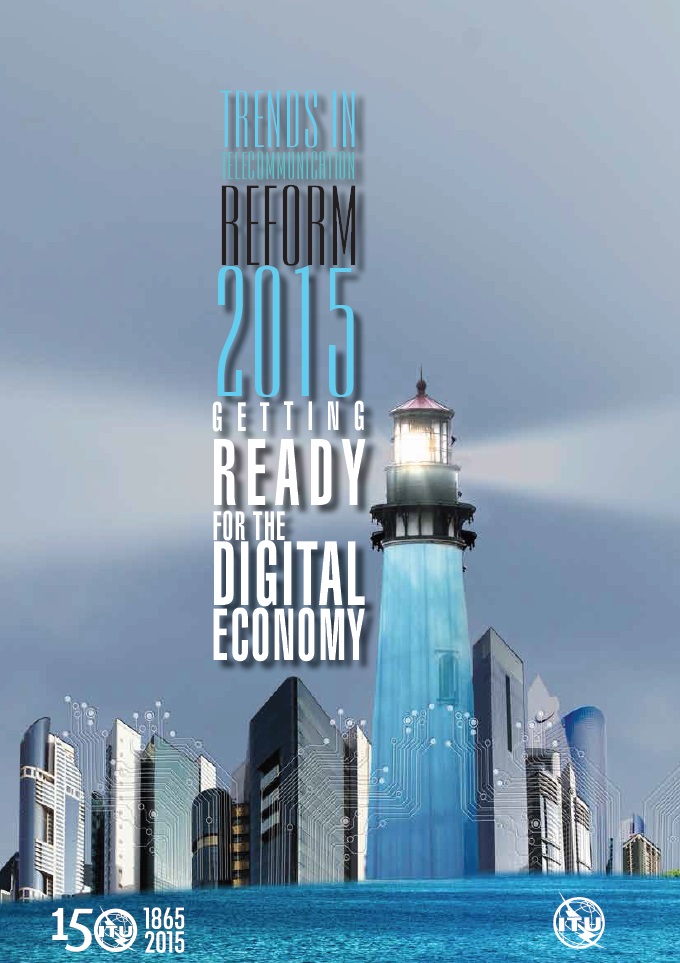
The Telecommunication Development Bureau (BDT) of the International Telecommunication Union (ITU) is pleased to present the 15th edition of Trends in Telecommunication Reform, focusing on Getting ready for the digital economy. The Trends series form a key part of the dialogue with the world’s information and communications technology (ICT) policy-makers and regulators in an increasingly converged digital environment. This edition is based on content discussed at the ITU Global Symposium for Regulators, held in Bahrain, in 2014.
This edition explores critical issues regulators need to put on their radar to ensure that citizens can benefit from the opportunities brought about by the digital economy in an informed, responsive and safe manner. It further provides an understanding on how the changes taking place in the digital ecosystem will affect national ICT policy and regulatory frameworks and identifies measures policy makers and regulators can take to respond efficiently to the new challenges brought about by the digital economy. As in previous edition, the publication will feature an indepth analysis of current market and regulatory trends based on ITU data from one of the world most comprehensive data platforms, the ICT Eye, and the newly released ITU ICT Regulatory Tracker.
This 15th edition is composed of the following eight chapters:
Chapter 1 identifies the key ICT market and regulatory trends emerging and spreading throughout the globe and provides an analysis of the impact of regulation on ICT services uptake.
Chapter 2 examines ways to reduce barriers to competition and offers practical casestudy examples of several approaches regulators and policymakers have taken to devise a framework to promote competition and consumer choice.
Chapter 3 looks at ways to accommodate broadband spectrum expansion through new modes of sharing and innovations in licensing.
Chapter 4 examines what Big Data is, looking at where ICT regulators, policy makers and other public authorities, have set or should set some boundaries.
Chapter 5 reviews a number of cross-cutting regulatory issues that policy-makers, regulators and industry should address to ensure that digital consumers are protected.
Chapter 6 provides an analysis of the economic influence of data and their impact on business models.
Chapter 7 reviews the principles of performance monitoring, examines the increasingly broad scope of broadband plans and discusses how the implementation of broadband plans and strategies can be monitored.
Chapter 8 wraps up the overall conclusions of this edition.